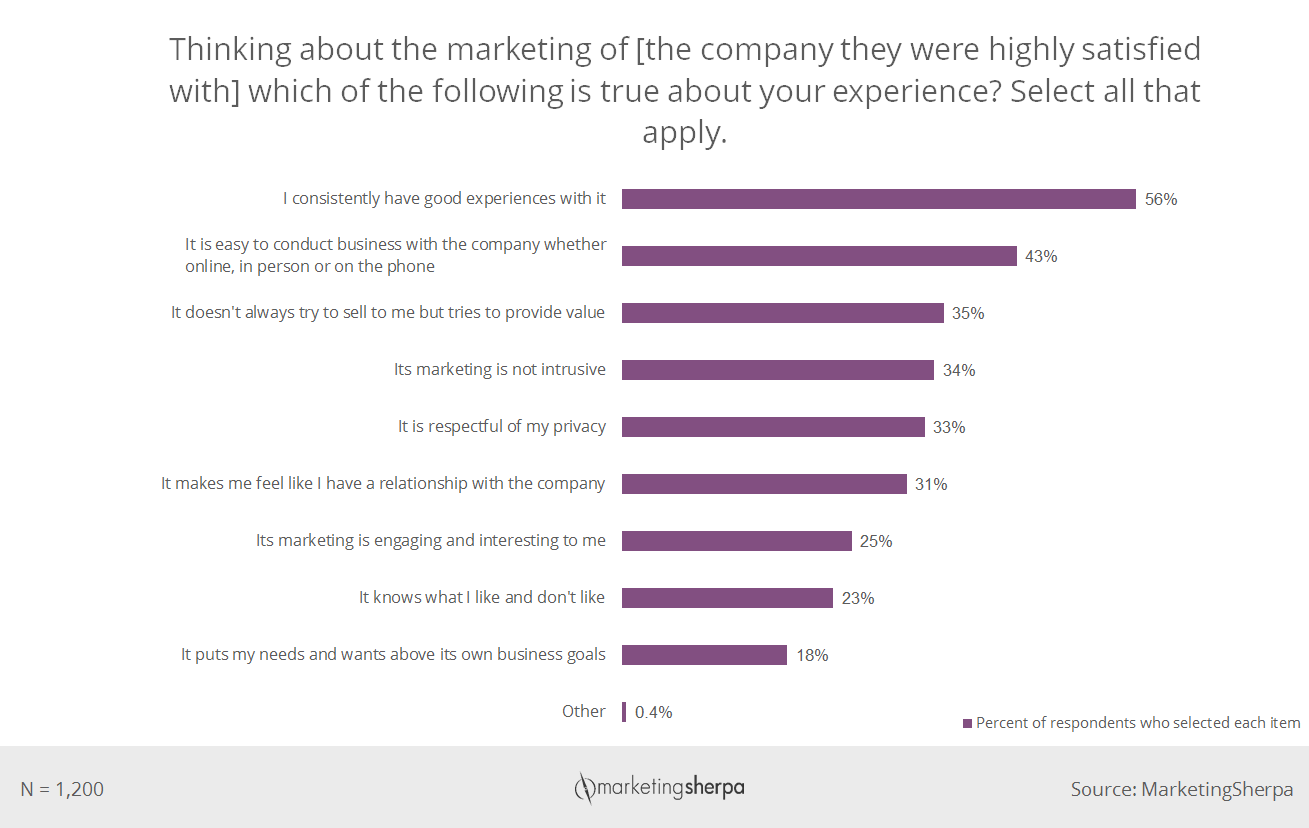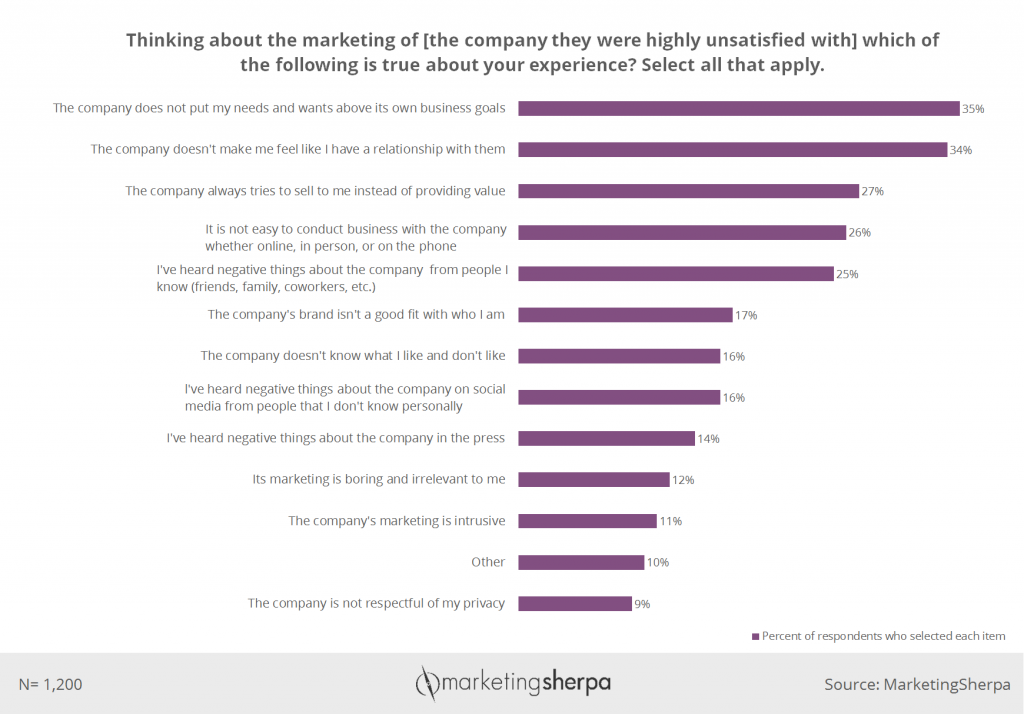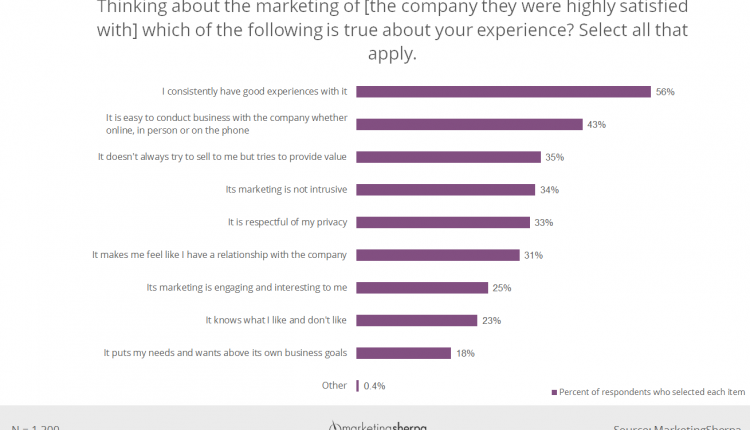The Importance of Building Trust: What 2,400 consumers say about trust in the conversion process
Websites are more than digital images and copy. Websites are relationships with people. And if we seek to influence behavior, we need to understand and respect that relationship.
All sales begin with customer understanding
As with any relationship, it begins with an understanding of who the other party in the relationship is, what they want, and what they get out of the relationship. In this case, that is the customer.
So before one pixel is even coded on a website, the goal should be to understand what the customer needs and wants, and then the question becomes — how can this website provide that? Without that understanding, the website has no reason for being.
“Organizations that understand how their customers think and feel have a much better chance at meeting their customers’ needs,” Katie Sherwin, User Experience Specialist, Nielsen Norman Group, said.
Establishing trust online
But building a website that will meet customers’ needs is not enough. They must believe it will meet their needs. They must trust the website.
This is a little easier if customers already have a trusting relationship outside of the websites with the brand: “Next to website trust-enhancing elements, the ‘off-line’ vendor image and reputation have been often found to be critical enablers of virtual interactions and transactions by lowering the transaction risk threshold and reducing customer anxiety,” said Efthymios Constantinides, assistant professor, University of Twente.
If they don’t already have a relationship with the brand, one of the first things customers are doing is sizing up the credibility of the organization behind the website. Even if they do have respect for the offline reputation of the brand behind the website, they’re trying to size up the value of interacting with that brand online.
This is where the proper sequencing of give and take in the relationship is critical. “Don’t make demands at higher levels of commitment until you’ve addressed all the trust needs at the inferior levels,” Katie said.
You only get what you give
In other words, to get, you must first give. That give can be free content, for example. As Raluca Badiu, Director of Research, Nielsen Norman Group, said, “Free content is the digital counterpart of the free samples from the physical world and is an ingrained use of the reciprocity principle on the Web.”
Or it can just be an understanding of the value of the asks you’re making, before you make them. Never assume the customer understands the value; you must show the value. And then deliver on that value after a customer completes the ask.
If you don’t communicate value clearly before the ask and deliver on it after the ask, you risk hurting the relationship and your customer abandoning you like a jilted lover in a romantic relationship, pining for an understanding of what it takes to get a value exchange. Perhaps Lauryn Hill put it best when she sang, “Tell me, who I have to be; To get some reciprocity … No matter how I think we grow; You always seem to let me know; It ain’t workin’; It ain’t workin’.”
Long-term relationships
As with any good relationship, this trust must not only be built before and during a conversion, but after the conversion as well. A marriage is a bond that stays solid because of much more than one “yes” during a proposal. There is a daily evaluation of the value exchange on a very subtle level. In highly trusting relationships, it is almost infinitesimal. But in low-trust relationships, it is constant.
Customers feel the same way when considering the relationship with the brands they purchase from. They must not be tricked into the purchase, and they must feel trust even after the purchase occurs if a website is going to be a long-term, sustainable asset for a company with repeat customers.
When we asked 2,400 customers about the companies they are highly satisfied and unsatisfied with through MarketingExperiments’ sister publication, MarketingSherpa, this erosion of trust was evident. In the October 2016 survey, we asked half of respondents, “Thinking about the marketing of [company they were highly satisfied with] which of the following is true about your experience? Select all that apply.” and the other half, “Thinking about the marketing of [company they were highly unsatisfied with], which of the following have you ever experienced that makes you unsatisfied? Select all that apply.”
For highly satisfied customers, the top response was, “I consistently have good experienced with it” (56% of respondents), and the bottom response was, “It puts my needs and wants above its own business goals” (18%).
However, for highly unsatisfied customers, the top response was “[Company name] does not put my needs and wants above its own business goals” (35%).


Just like with the happily married versus unhappy couple — when things are going well minor slights get swept under the rug, but when things are going poorly, we begin to question the motives of the other party in the relationship.
So it is not enough to secure a conversion; you must get the conversion in a way that the customer feels served, not tricked.
For example, when researching bricks-and-mortar interactions, professors Geoffrey N. Soutar and Jillian C. Sweeney learned that, “While sales staff can act to reduce dissonance through providing information and reassurance, they should not be too pushy at the point of sale or be artificially enthusiastic when following up after the sale. Managers need to be aware of the pivotal role that sales staff play and ensure that they are supported in dissonance reducing tactics, as a failure to assess and address dissonance can have negative outcomes.”
Sweeney and Soutar are referring to the cognitive dissonance customers may feel if they have doubts after the purchase.
So how can you build trusting relationships with customers?
Put yourself in the shoes of the customer
I was reading “A Horn for Louis” by Eric A. Kimmel with my daughter. The accompanying reading guide from PJ Library asks, “Mr. Karnofsky considers Louis’s feelings when giving Louis the horn. Can you think of a time when you put yourself in someone else’s shoes? Did it change the way you acted?”
A simple lesson in a children’s book, sure. But it points to a way to overcome the central problem consumers told us in the aforementioned survey — they’re highly unsatisfied when they don’t think companies are putting their needs first, when these companies aren’t practicing customer-first marketing.
So I’ll end with a rhetorical question — how do you build trust with customers?
This blog post will be worthless to you if you don’t actually put its advice into action. So (amidst the busyness of your day) really ask yourself — When have you had concerns after making a purchase? Why did you have them? What was the ultimate result?
And now think of your own marketing efforts. Can you think of a time when you put yourself in someone else’s shoes? Did it change the way you acted?
This post was inspired by a reading discussion in the University of Florida Communicating Value and Web Conversion Graduate Certificate program, created in partnership with MECLABS Institute, in which I am a student.
You might also like …
Transparent Marketing: How to earn the trust of a skeptical consumer
Consumers’ Trust: Looking at healthcare and politicians
Customer-centric Marketing: How transparency translates into trust



